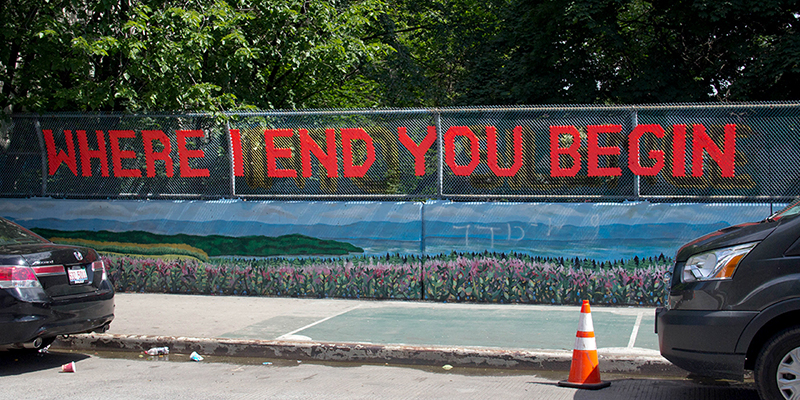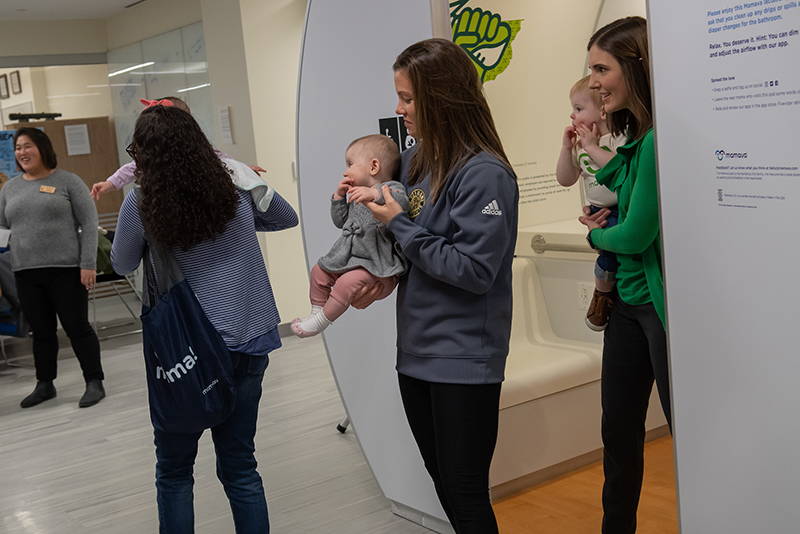It’s no secret that Vermonters love snow. The state is known for destination-worthy skiing, snowshoeing and snowboarding, as evidenced by the 1800-member UVM Ski and Snowboard Club — the largest actively student-run organization on the university’s campus — and the Catamount men and women who consistently finish strong in both alpine and Nordic events. While we savor snow sports, we know that sprains, strains and fractures can happen if we overexert ourselves or fail to train properly.
Rehabilitation and Movement Science Professor Karen Westervelt teaches biomechanics and kinesiology to exercise science students and musculoskeletal evaluation and treatment to physical therapy students. Dr. Westervelt recently accompanied Team USA to the 2020 Biathlon Youth and Junior World Championships in Lenzerheide, Switzerland, serving as a medical volunteer. Biathlon is a Nordic skiing event in which competitors combine cross-country skiing and marksmanship. Excelling in biathlon requires extreme aerobic exertion paired with motionless calm and precision. A nationally board certified orthopedic physical therapy specialist, health and wellness coach, and athletic trainer, Westervelt supports Team USA biathletes by providing care and prevention of athletic injuries to optimize the athletes’ performance.
We talked to Westervelt about how we can best sustain our health and enjoy the snow season to the fullest — and her experience with biathletes.
What techniques or exercises would you recommend that snow sports-enthusiasts adopt into their routines to help prevent injuries throughout the season?
KW: Strength train! Working the same muscles over and over again leads to imbalances. Some muscles are very strong because they get used a lot, whereas other muscles might be weak. An imbalance in force across the joints predisposes an athlete to injury. For example, Nordic skiers use their triceps a lot when poling, so they need to strengthen their biceps in the gym. Their anterior shoulder and core muscles also tend also to be very strong, but the upper back muscles don’t get used as much in skiing and therefore need to be strengthen to maintain balance in the shoulder complex and core. Hitting the gym helps keep an athlete injury-free and makes a more powerful skier.
You’ve worked closely with athletes and have seen quite a few competitions in your capacity as a physical therapist and athletic trainer. What are some of the most common yet preventable injuries you treat?
KW: One common mistake I see is athletes focusing on sport-specific training and not taking the time to cross train and work different muscles. Cross-training is fun and prevents injuries. Do both classic skiing and skate skiing. Try fat biking. Go ice skating. I see a lot of biathletes who only skate ski and end up with overuse injuries by midseason. A common overuse injury among Nordic skiers is anterior compartment syndrome — shin pain — followed by lumbar and thoracic spine pain and shoulder injuries. If anterior compartment syndrome isn’t addressed early, it may lead to a build-up of pressure and pain in the shin, tingling and numbness in the foot, and eventually a loss of control in muscles that flex the ankle. Proper technique and cross-training can reduce the incidence of overuse injuries.
Are there any common errors or avoidable mistakes you tend to see among athletes on race days?
KW: Athletes become vulnerable to injuries when they attempt to do something in competition that is not what they have practiced. The race-day excitement, cheering crowds, racers from all around the world and competitive drive may cause athletes to try something different from practice, like trying to go faster on hills or not taking time to relax into proper position. This tends not work out so well for the athlete. Even experienced athletes at the Biathlon Youth and Junior World Championships will start a distance race too hard and fast and run out of energy before the last lap, or miss multiple targets in a race because they lost focus and did not do what they had prepared over and over in practice. It’s very easy to get caught up in the adrenalin of race day excitement. This is important for recreational athletes, too: Don’t ski a black diamond expert trail until you have practiced turning and stopping on steeper intermediate terrain.
What should winter sports athletes do to prepare for a race or competition in advance, day-of and after competing?
KW: Stay healthy! Make an effort to maintain good physical and mental health during the mid-competitive season. Proper nutrition, rest, mental state, training and coaching all need to come together on race day. Remember the basics, too: Warm up properly before an intense day on the snow. After an event, do an active cool down, refuel and stretch.
What would you recommend avid winter sport participants to sustain the longevity of their years on the snow?
KW: Learn good technique early on, with lessons or professional coaching. Use smart training practices, including a comprehensive off-season training program that focuses on building muscle strength, cardiovascular endurance, neuromotor coordination and flexibility.
Understand the snow conditions and modify technique accordingly. Icy snow demands a greater muscular co-contraction to provide stability and balance. Know your equipment, maintain it and check it regularly. Wear appropriate safety gear. For alpine athletes, this includes wearing a helmet. Helmets reduce head injuries.
Finally, recognize the first sign of an injury and seek professional advice. Early intervention with a skilled health care professional such as a physical therapist of an athletic trainer can get you back on the snow quickly and safely and help you peform at your best.
Source: UVM News


